Photo
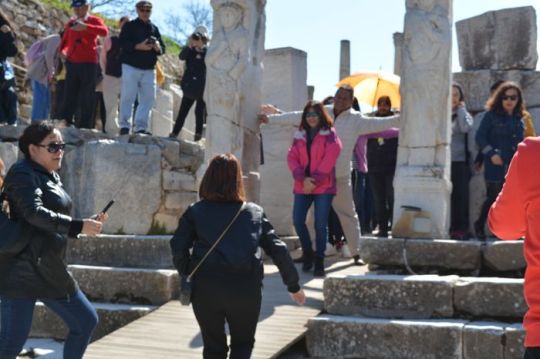
Importance of Nadir Shah's Throne
Hammer’s history sheds light on the significance of the protection of Hicaz and the diplomatic exchanges with envoys sent there. The Ottoman Empire’s decision to send gifts worth 386,402 piasters in exchange for Nadir Shah’s throne underscores its importance. Considering that one gold coin equaled fifty piasters at that time, this amount represented a substantial sum.
Return of Ottoman Gifts
Despite the valuable gifts sent by the Ottoman Empire, including the construction of the Ahmed III library, they were brought back to Istanbul following Nadir Shah’s death. However, Nadir Shah’s throne remained in Baghdad for a period before eventually reaching Istanbul in 1758. It was officially registered in the treasury book two years later, in 1760 Istanbul Private Tours Mevlevi.
Izzi Suleyman Efendi’s Account
During the time Nadir Shah’s throne was in Baghdad, Izzi Suleyman Efendi, the private historian of the palace, provided limited information about it compared to the detailed account of the gifts exchanged. Izzi emphasized the importance of the incoming gifts over the outgoing ones, as reflected in his annals.
Ottoman Envoy’s Description
The Ottoman envoy, Mustafa Nazif Efendi, described the throne as approximately 20 feet in height and 10 feet in width, situated within a six-columned Persian-style tent. He received the throne and a letter from Nadir Shah, which he conveyed to Sultan Mahmut I in Istanbul. Despite his swift journey, the throne itself arrived in Istanbul a decade later, ten years after the envoy’s visit.
Through Hammer’s history and Izzi Suleyman Efendi’s annals, we gain insight into the diplomatic intricacies surrounding the exchange of Nadir Shah’s throne and the lasting impact it had on Ottoman-Iranian relations.
0 notes
Photo
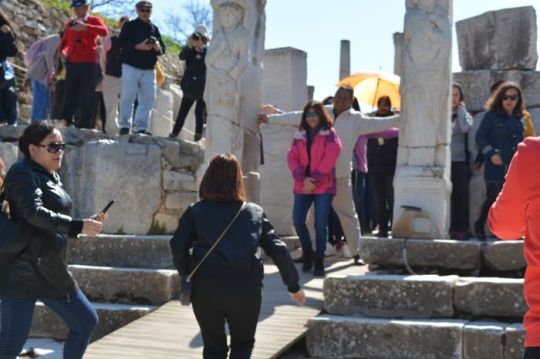
Importance of Nadir Shah's Throne
Hammer’s history sheds light on the significance of the protection of Hicaz and the diplomatic exchanges with envoys sent there. The Ottoman Empire’s decision to send gifts worth 386,402 piasters in exchange for Nadir Shah’s throne underscores its importance. Considering that one gold coin equaled fifty piasters at that time, this amount represented a substantial sum.
Return of Ottoman Gifts
Despite the valuable gifts sent by the Ottoman Empire, including the construction of the Ahmed III library, they were brought back to Istanbul following Nadir Shah’s death. However, Nadir Shah’s throne remained in Baghdad for a period before eventually reaching Istanbul in 1758. It was officially registered in the treasury book two years later, in 1760 Istanbul Private Tours Mevlevi.
Izzi Suleyman Efendi’s Account
During the time Nadir Shah’s throne was in Baghdad, Izzi Suleyman Efendi, the private historian of the palace, provided limited information about it compared to the detailed account of the gifts exchanged. Izzi emphasized the importance of the incoming gifts over the outgoing ones, as reflected in his annals.
Ottoman Envoy’s Description
The Ottoman envoy, Mustafa Nazif Efendi, described the throne as approximately 20 feet in height and 10 feet in width, situated within a six-columned Persian-style tent. He received the throne and a letter from Nadir Shah, which he conveyed to Sultan Mahmut I in Istanbul. Despite his swift journey, the throne itself arrived in Istanbul a decade later, ten years after the envoy’s visit.
Through Hammer’s history and Izzi Suleyman Efendi’s annals, we gain insight into the diplomatic intricacies surrounding the exchange of Nadir Shah’s throne and the lasting impact it had on Ottoman-Iranian relations.
0 notes
Photo

Economic Burdens and Rising Unrest
The heavy taxation imposed on the agricultural population, often reaching up to twenty or thirty percent, placed significant financial strain on the villagers. These taxes, subject to the whims of tax collectors, were suddenly doubled, leading to further hardships, forced sales of property, and escalating tensions between villagers and tax collectors.
Taxation Woes
The abrupt demand for advance payment of taxes for 1876 exacerbated the villagers’ plight, resulting in more forced sales, extortion, and clashes with tax collectors. This economic turmoil fueled discontent and prompted secret gatherings among the young men of the village.
Seeds of Rebellion
Inspired by the independence movements in neighboring regions like Bosnia, Herzegovina, Montenegro, and Servia, the young men of the village began discussing plans to overthrow Turkish rule and assert their own independence. Despite being far from a coordinated uprising Tour Packages Bulgaria, these discussions marked the early stages of what would later become known as the insurrection.
External Influence
Contrary to Turkish and diplomatic assertions, the insurrection in Panagurishti was not incited by external forces like Russians or Servians. Instead, it was driven by local Bulgarians, some of whom were studying or working in Bucharest. These individuals, comprising the Insurrectional Committee, played a pivotal role in organizing and fueling the rebellion.
Raika’s Innocence
Raika, despite her prominent position in the village, had no involvement in inciting the rebellion. Her first inkling of the brewing unrest came during a surprising encounter at a supposed school committee meeting. Instead of the usual attendees, she found herself amidst young men listening to a fervent speech advocating for rebellion, delivered by a mysterious figure named Bankovsky.
The seeds of rebellion sown in Panagurishti were rooted in economic hardship and discontent among the villagers. While external influences were minimal, local grievances and aspirations for independence drove the nascent insurrection. Raika’s inadvertent involvement serves as a testament to the tumultuous times and the complex dynamics at play in rural Bulgaria during this period of unrest.
0 notes
Photo
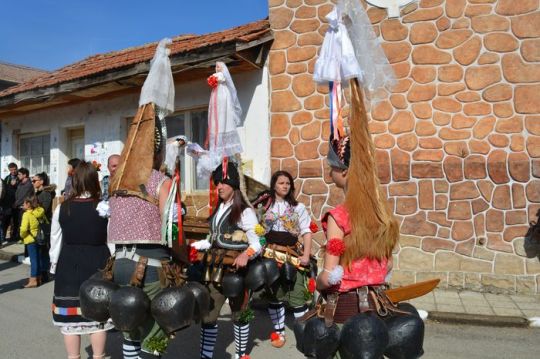
Unfathomable Horrors Unveiled
Conflicting Figures
Reports from various sources paint a harrowing picture of devastation and loss in the regions surrounding Philippopolis and Tatar Bazardjik. Mr. Baring’s forthcoming report is expected to document approximately fifty villages razed to the ground and nearly 15,000 lives lost. However, this figure is considered conservative, as French and Russian Consuls, along with railway officials, offer significantly higher estimates, suggesting over a hundred villages decimated and casualties ranging from 25,000 to 40,000. Shockingly, some claim the death toll to be as high as 100,000.
Overwhelming Horror
Once the staggering figure of 15,000 lives lost in just four days is acknowledged, further inquiry seems almost futile. The magnitude of suffering encapsulated in this statistic is unfathomable. Whether the higher estimates are accurate or not, the horror remains undiminished. It’s not the numerical increase that intensifies the horror but the gruesome details that accompany the carnage Turkey Sightseeing.
Heart-Wrenching Testimonies
Accounts from eyewitnesses provide chilling insights into the barbarity unleashed upon innocent civilians. The Greek Consul recounts the horrific fate of 12,000 women and children herded into Tatar Bazardjik, subjected to unspeakable atrocities. Stories emerge of desperate Bulgarian parents resorting to unthinkable acts, such as killing their own families to spare them from the brutality of the Bashi-Bazouks. German officials recount scenes of unimaginable cruelty, including the mutilation of men’s bodies left for animals to devour, the agonizing torment inflicted upon helpless children, and the brutal execution of a priest who witnessed the annihilation of his loved ones before enduring unspeakable torture himself.
Unimaginable Cruelty
The atrocities detailed in these accounts defy comprehension, plunging the mind into a realm of horror too ghastly to contemplate fully. Each narrative serves as a testament to the depths of human depravity and the unfathomable suffering endured by the innocent. As these chilling testimonies emerge, the urgency to address the heinous crimes perpetrated against humanity grows ever more pressing.
0 notes
Photo
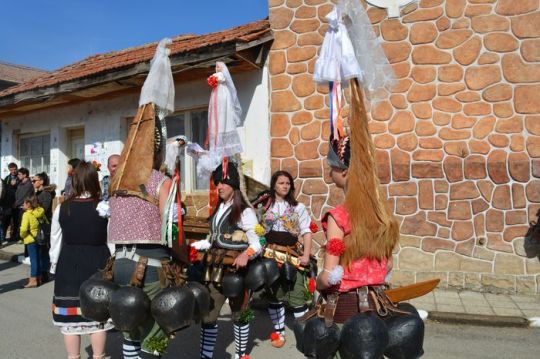
Unfathomable Horrors Unveiled
Conflicting Figures
Reports from various sources paint a harrowing picture of devastation and loss in the regions surrounding Philippopolis and Tatar Bazardjik. Mr. Baring’s forthcoming report is expected to document approximately fifty villages razed to the ground and nearly 15,000 lives lost. However, this figure is considered conservative, as French and Russian Consuls, along with railway officials, offer significantly higher estimates, suggesting over a hundred villages decimated and casualties ranging from 25,000 to 40,000. Shockingly, some claim the death toll to be as high as 100,000.
Overwhelming Horror
Once the staggering figure of 15,000 lives lost in just four days is acknowledged, further inquiry seems almost futile. The magnitude of suffering encapsulated in this statistic is unfathomable. Whether the higher estimates are accurate or not, the horror remains undiminished. It’s not the numerical increase that intensifies the horror but the gruesome details that accompany the carnage Turkey Sightseeing.
Heart-Wrenching Testimonies
Accounts from eyewitnesses provide chilling insights into the barbarity unleashed upon innocent civilians. The Greek Consul recounts the horrific fate of 12,000 women and children herded into Tatar Bazardjik, subjected to unspeakable atrocities. Stories emerge of desperate Bulgarian parents resorting to unthinkable acts, such as killing their own families to spare them from the brutality of the Bashi-Bazouks. German officials recount scenes of unimaginable cruelty, including the mutilation of men’s bodies left for animals to devour, the agonizing torment inflicted upon helpless children, and the brutal execution of a priest who witnessed the annihilation of his loved ones before enduring unspeakable torture himself.
Unimaginable Cruelty
The atrocities detailed in these accounts defy comprehension, plunging the mind into a realm of horror too ghastly to contemplate fully. Each narrative serves as a testament to the depths of human depravity and the unfathomable suffering endured by the innocent. As these chilling testimonies emerge, the urgency to address the heinous crimes perpetrated against humanity grows ever more pressing.
0 notes
Photo

Soviet Influence and Systematic Imitation
Elections and Opposition Suppression
All “elections” in Bulgaria now mirror the Soviet model, where a single ballot list is presented by the Communist Party and government. Opposition is prohibited and treated as sedition, entirely resembling the Soviet electoral system.
Full-Scale Sovietization (Since 1947)
Bulgaria has undergone complete Sovietization. The Communists, in December 1947, introduced a constitution of their own making, with plans for a new one even more closely mirroring the Soviet Constitution. Every aspect of life is organized following the Soviet pattern, with the Communist Party being the sole source of power. The Party structure closely mimics the Soviet model, featuring a Central Committee, the Politbureau, and the Secretariat.
Alignment with Moscow’s Policies
The Bulgarian Communist Party consistently aligns its stance with Moscow’s directives. Notably, when Soviet publications praised Stalin as a “genius-like father of the nations,” Bulgarian Red newspapers echoed the same accolades. Similarly, as soon as the Soviet press denounced the “personality cult,” the Sofia press propagated the same message Guided Istanbul Tours.
Soviet-Inspired Administrative System (Since March 1959)
The administration of the country now operates through provincial, district, and city councils known as “People’s Soviets of the Workers,” resembling the administrative structure in the USSR. This system, introduced in March 1959, is a direct replication of the “decentralization” scheme implemented in the Soviet Union in December 1957.
Military Adherence to Soviet Practices
In the military, the Bulgarian Communists have adopted the divisional system used in the Soviet armed forces. Training methods mirror those of the Red Army, and weapons and equipment are of Soviet origin. The Bulgarian high command consists of Communists who spent their entire lives in the USSR, with many holding commissions in the Red Army during World War II.
0 notes
Photo

Soviet Influence and Systematic Imitation
Elections and Opposition Suppression
All “elections” in Bulgaria now mirror the Soviet model, where a single ballot list is presented by the Communist Party and government. Opposition is prohibited and treated as sedition, entirely resembling the Soviet electoral system.
Full-Scale Sovietization (Since 1947)
Bulgaria has undergone complete Sovietization. The Communists, in December 1947, introduced a constitution of their own making, with plans for a new one even more closely mirroring the Soviet Constitution. Every aspect of life is organized following the Soviet pattern, with the Communist Party being the sole source of power. The Party structure closely mimics the Soviet model, featuring a Central Committee, the Politbureau, and the Secretariat.
Alignment with Moscow’s Policies
The Bulgarian Communist Party consistently aligns its stance with Moscow’s directives. Notably, when Soviet publications praised Stalin as a “genius-like father of the nations,” Bulgarian Red newspapers echoed the same accolades. Similarly, as soon as the Soviet press denounced the “personality cult,” the Sofia press propagated the same message Guided Istanbul Tours.
Soviet-Inspired Administrative System (Since March 1959)
The administration of the country now operates through provincial, district, and city councils known as “People’s Soviets of the Workers,” resembling the administrative structure in the USSR. This system, introduced in March 1959, is a direct replication of the “decentralization” scheme implemented in the Soviet Union in December 1957.
Military Adherence to Soviet Practices
In the military, the Bulgarian Communists have adopted the divisional system used in the Soviet armed forces. Training methods mirror those of the Red Army, and weapons and equipment are of Soviet origin. The Bulgarian high command consists of Communists who spent their entire lives in the USSR, with many holding commissions in the Red Army during World War II.
0 notes
Photo

Soviet Influence and Systematic Imitation
Elections and Opposition Suppression
All “elections” in Bulgaria now mirror the Soviet model, where a single ballot list is presented by the Communist Party and government. Opposition is prohibited and treated as sedition, entirely resembling the Soviet electoral system.
Full-Scale Sovietization (Since 1947)
Bulgaria has undergone complete Sovietization. The Communists, in December 1947, introduced a constitution of their own making, with plans for a new one even more closely mirroring the Soviet Constitution. Every aspect of life is organized following the Soviet pattern, with the Communist Party being the sole source of power. The Party structure closely mimics the Soviet model, featuring a Central Committee, the Politbureau, and the Secretariat.
Alignment with Moscow’s Policies
The Bulgarian Communist Party consistently aligns its stance with Moscow’s directives. Notably, when Soviet publications praised Stalin as a “genius-like father of the nations,” Bulgarian Red newspapers echoed the same accolades. Similarly, as soon as the Soviet press denounced the “personality cult,” the Sofia press propagated the same message Guided Istanbul Tours.
Soviet-Inspired Administrative System (Since March 1959)
The administration of the country now operates through provincial, district, and city councils known as “People’s Soviets of the Workers,” resembling the administrative structure in the USSR. This system, introduced in March 1959, is a direct replication of the “decentralization” scheme implemented in the Soviet Union in December 1957.
Military Adherence to Soviet Practices
In the military, the Bulgarian Communists have adopted the divisional system used in the Soviet armed forces. Training methods mirror those of the Red Army, and weapons and equipment are of Soviet origin. The Bulgarian high command consists of Communists who spent their entire lives in the USSR, with many holding commissions in the Red Army during World War II.
0 notes
Photo
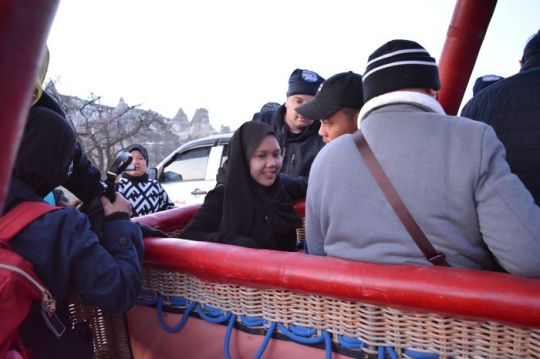
Bulgaria's Path to Democracy 1988-1990
Covert Opposition and the Emergence of the Union of the Democratic Forces (UDF)
Amidst the changing tides of 1988, Bulgaria’s Secret Services strategically worked to suppress any opposition movement that might naturally emerge. Unlike other Eastern European nations with pre-existing oppositions, such as Poland or Czechoslovakia, Bulgaria’s democratic movement, rallying under the slogan “Forty-five years are enough! Time is ours!” was led not by dissidents or anti-communists but by representatives of the totalitarian intellectual elite. The communists responded with a retort, asserting, “Time might be yours, but the money is ours!” This marked the swift transfer of public funds into the hands of newly affiliated businessmen loyal to the Party.
On December 7, 1989, sixteen opposition organizations, including former “non-formals” and reactivated pre-war parties, joined forces to establish the Union of the Democratic Forces (UDF). Driven by the “dissident” Zhelyo Zhelev, a Doctor of Philosophical Sciences, the UDF spearheaded mass rallies and public protests. These actions triggered a transformation in the leadership of existing public and political organizations, prompting most to undergo name changes. Even the Bulgarian Communist party felt the impact of democratization, rebranding itself as the Bulgarian Socialist Party (BSP), with internal factions emerging. Following the “gentle revolution” model in Czechoslovakia, the concept of a “peaceful transition from the totalitarian system to democracy” gained traction City Tours Istanbul.
The Round Table Conference and Democratic Agreements
In January 1990, mirroring the Polish example, the “reformed” communist government initiated a dialogue with the opposition, mainly composed of ex-communists and former functionaries from totalitarian structures. This took the form of a conference known as the “round table.” Intense debates at the round table resulted in agreements on crucial issues such as democratizing state institutions, enacting a law on political parties, restoring private property, guaranteeing human rights, privatizing, and introducing a market economy. As a direct outcome, the Zhivkov-led State Council was dissolved, and Petar Mladenov assumed the role of Bulgaria’s First President. This marked a pivotal step in Bulgaria’s journey toward democracy, guided by the principles of dialogue and compromise.
0 notes
Photo

Bulgaria's Path to Democracy 1988-1990
Covert Opposition and the Emergence of the Union of the Democratic Forces (UDF)
Amidst the changing tides of 1988, Bulgaria’s Secret Services strategically worked to suppress any opposition movement that might naturally emerge. Unlike other Eastern European nations with pre-existing oppositions, such as Poland or Czechoslovakia, Bulgaria’s democratic movement, rallying under the slogan “Forty-five years are enough! Time is ours!” was led not by dissidents or anti-communists but by representatives of the totalitarian intellectual elite. The communists responded with a retort, asserting, “Time might be yours, but the money is ours!” This marked the swift transfer of public funds into the hands of newly affiliated businessmen loyal to the Party.
On December 7, 1989, sixteen opposition organizations, including former “non-formals” and reactivated pre-war parties, joined forces to establish the Union of the Democratic Forces (UDF). Driven by the “dissident” Zhelyo Zhelev, a Doctor of Philosophical Sciences, the UDF spearheaded mass rallies and public protests. These actions triggered a transformation in the leadership of existing public and political organizations, prompting most to undergo name changes. Even the Bulgarian Communist party felt the impact of democratization, rebranding itself as the Bulgarian Socialist Party (BSP), with internal factions emerging. Following the “gentle revolution” model in Czechoslovakia, the concept of a “peaceful transition from the totalitarian system to democracy” gained traction City Tours Istanbul.
The Round Table Conference and Democratic Agreements
In January 1990, mirroring the Polish example, the “reformed” communist government initiated a dialogue with the opposition, mainly composed of ex-communists and former functionaries from totalitarian structures. This took the form of a conference known as the “round table.” Intense debates at the round table resulted in agreements on crucial issues such as democratizing state institutions, enacting a law on political parties, restoring private property, guaranteeing human rights, privatizing, and introducing a market economy. As a direct outcome, the Zhivkov-led State Council was dissolved, and Petar Mladenov assumed the role of Bulgaria’s First President. This marked a pivotal step in Bulgaria’s journey toward democracy, guided by the principles of dialogue and compromise.
0 notes
Photo

Current Struggles in Bulgarian Villages
The Perils of Daily Life
This article delves into the contemporary challenges faced by Bulgarian villagers, highlighting a pattern of systematic exploitation, pillaging, and abuse. From economic hardships to egregious assaults, the rural population grapples with a harsh reality that demands urgent attention.
A Stolen Livelihood
The first section exposes a troubling aspect of the villagers’ plight — the confiscation of their cattle and horses. This not only disrupts their means of livelihood but leaves them vulnerable to further exploitation. The article explores the ramifications of resisting this seizure, revealing a cycle of violence and oppression.
The Brutal Consequence
Examining the consequences of resistance, the article reveals a disturbing pattern of beatings and sabre attacks against those who dare to voice complaints or resist the pillaging of their possessions. This section sheds light on the harsh reprisals faced by villagers who attempt to stand up against the oppressors Bulgaria Tour.
Women as Targets
The narrative takes a harrowing turn as it exposes the blatant and open assaults on the dignity of women in these villages. Instances of women being seized and outrageously violated come to the forefront. The article emphasizes the urgent need to address this egregious violation of basic human rights.
Begging for Livelihood
A shift in focus to the economic struggles of villagers is highlighted as the article recounts a visit to Kritchina. Villagers from Tchanaktchi approached, desperately seeking financial assistance to repurchase their cattle from Turks who demanded payment for their return. This section underscores the economic coercion and desperation faced by the rural population.
Exploitation in Plain Sight
The plight of another village, unnamed but recognized by authorities, is unveiled. Villagers are only permitted to harvest their crops under the condition that half of the yield is surrendered to Turkish neighbors. This practice of economic exploitation, occurring within a short distance of Philippopolis, is dissected to expose the extent of the villagers’ economic subjugation.
Urgent Appeals for Intervention
The article concludes by emphasizing the urgency of addressing the multifaceted challenges faced by Bulgarian villagers. It calls for international intervention, advocacy, and a collective effort to curtail the ongoing abuses, ensuring that these rural communities are no longer subjected to economic extortion, violence, and assaults on their dignity.
A Call for Justice and Empowerment
In a final reflection, the article echoes the cries of the villagers, urging the global community to stand in solidarity, advocate for justice, and empower these communities to break free from the shackles of exploitation and abuse.
0 notes
Photo
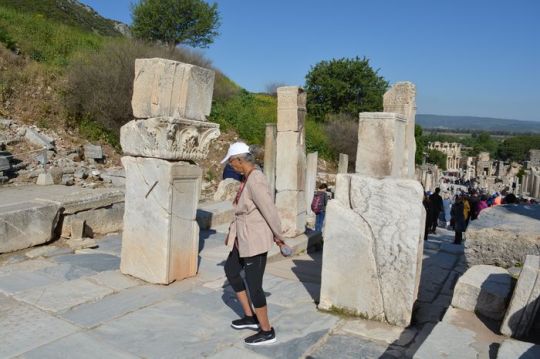
Amidst Beauty and Ruin
Traversing the Charmed and Scarred Landscape of Otluk-kui
The Lush Oasis Within Desolation Houses and Gardens
As one traverses the remnants of Otluk-kui, a village steeped in tragedy, the juxtaposition of comfort and destruction becomes a haunting testament to the resilience of the human spirit amidst adversity. The houses, though now bearing the scars of the recent horrors, once stood as symbols of comfort and solidity. These well-constructed abodes, partly surrounded by gardens and fruit trees, created a picturesque setting where luxuriant foliage hung over walls, offering a charming freshness that now serves as a poignant contrast to the blackened ruins.
The gardens, once vibrant with life, have become silent witnesses to the atrocities that unfolded. The juxtaposition of the verdant greenery against the backdrop of destruction is a visual representation of the dichotomy that defines Otluk-kui—a village that was both a haven of beauty and a theater of horrors. The haunting charm that once emanated from these gardens is now overshadowed by the ghostly echoes of the past.
Saddling Horses, Muffling Cries Journeying to Avrat-Alan
The next chapter of our exploration unfolded as we mounted horses in Otluk-kui, eager to leave behind the haunting scenes etched into the village’s history. The horses, symbols of mobility and escape, were brought to us around one o’clock. Amidst a crowd of onlookers, we embarked on a journey toward Avrat-Alan, also known as Kuprishstitza in Bulgarian—a destination nestled a few miles to the north Travel Bulgaria, higher up in the mountains.
The act of mounting horses, typically a symbol of adventure and exploration, took on a somber tone as the mournful cries of the gathered crowd accompanied our departure. Their cries, laden with the weight of sorrow and perhaps a plea for remembrance, followed us, compelling even the riders to shield their ears from the haunting sounds. The departure from Otluk-kui became a symbolic transition from a place marred by tragedy to the anticipation of what lay ahead in the higher reaches of the mountains.
The journey to Avrat-Alan, set against the backdrop of the desolation left in Otluk-kui, becomes a narrative thread that weaves through contrasting landscapes—from the lush charm of a village ravaged by horror to the promise of new vistas higher up in the mountains. The horses, though serving as mere means of transportation, carried with them the echoes of Otluk-kui’s sorrow, marking the beginning of a transformative expedition through landscapes scarred and untouched.
0 notes
Photo

PRINCIPAL SIGHTS IN CONSTANTINOPLE
The most remarkable things to be seen are: Mosques—St. Sophia, Ahmedieh, Suleimanieh and Chora Mosques, which are the four principal ones, and of which St. Sophia and Chora are of Byzantine architecture, and the other two Turkish. Other mosques to be seen are—SS. Sergius and Bacchus (St. Sophia the less), Mehmed Pasha’s mosque, Rustem Pasha’s mosque, and the Valid eh mosque, the last three having beautiful tiles.
Tombs—The tomb of Sultan Selim II., of Sultan Mahmud II., of Suleiman the Great, the tomb of Shah-Zadeh, and of Sultan Muhammad II., the Conqueror. Museums —The Imperial Museum of Antiquities, the Church of St. Irene, the Treasury (in the Old Seraglio), the Museum of Ancient Costumes (in the Hippodrome), and Yildiz Palaces and Gardens (see p. 159) Obelisks and Columns. The Obelisk of Theodosius, the Serpent Column, and the Colossus in the Hippodrome, the Porphyry or Burnt Column, Marcian’s Column, the Column of Theodosius II., and the Column of Arcadius. Cisterns—The Philoxenos,
and the Basilica. Walls—The Seven Towers and the Walls of Constantinople. Bazaars—The Grand Bazaar and the Egyptian Bazaar. Processions—The Selamlik, the Procession of the Holy Camel, the Sultan’s procession to the Hirka-i-Sherif Mosque in the old Seraglio every 15th of Ramazan. Excursions—The Golden Horn, the Bosporus, the Forest of Belgrade, the Sweet Waters of Europe, the Sweet Waters of Asia, the Princes’ Islands, and Brusa.
The Bazaars: Shopping.—The bazaars are situated at Stambul private istanbul tour, between the second and third hills, i.e. between the Burnt Column and the Stambul fire tower. They cover an area of several acres, and consist of long, narrow, vaulted streets, roofed by small domes admitting the light through small windows and bull’s-eyes.
Byzantine era
With the exception of the central part called the “ Bezesten,” which dates from the Byzantine era, the bazaars were built by Sultan Bayazid II. about 1500 A.D. They are reached through more than one hundred entrances, and are occupied only in the daytime. The total number of the shops, which are not State property, but are owned by individuals, is about 4000.
Tourists and visitors shopping in the bazaars, or at any of the native shops, should not pay the price asked, as, except at some of the large shops where the prices are fixed, tradesmen are in the habit of asking high prices of strangers. A golden rule is to offer one-third of the prices asked at curiosity shops, and give a little more only when one is sure his firs offer will not be accepted. The prices asked vary according to the amount of notice a customer may bestow on any article shown him. A refusal on the dealer’s part to take the price offered him means nothing, and if a customer leave the shop, he will invariably find the tradesman at his heels, and ready to close with his offer, before he has gone many yards farther on.
Hans.—-These, numbering some 180, are, for the most part, large square buildings enclosing a courtyard, originally erected by different sultans and private individuals, for the accommodation of Turkish and other merchants and travellers. Only men are allowed to dwell in them. A great many European merchants or their agents now have their offices and warehouses in these Hans. The massive iron-plated doors are always closed at sunset and are not opened till sunrise. The two largest Turkish Hans are the Buyuk Yeni Han and Yalideh Han, near the Bazaar and War Office. They suffered considerable damage during the earthquakes of July 1894.
The Selamlik or Sultan’s Procession to the Mosque takes place every Friday about noon. Visitors are allowed to go near the Mosque where the Sultan is to go and see him driving in state, as well as the various troops which come for the parade. It is unnecessary to wait and see him again when he comes out of the Mosque as the time he stays there is uncertain. Tourists can view the whole procession from their carriage, or enter into the courtyard of the Mosque in which the ceremony is going to take place, and thus see hiih and the Palace courtiers as well as the various generals from near.
Dervishes. — Whirling or Dancing Dervishes. The best Mevlevi, or Dancing Dervishes, are to be seen at their convent, 539 Grande Kue, near the Pera terminus of the Underground ltailway. Performance on Fridays, at 8.30 (Turkish time) throughout the year. Entrance 2\ piastres per head (5d.). Visitors are expected to take off their hats. Sticks, umbrellas, and kodaks must be left at the door in charge of the doorkeeper. Sketching or taking notes is not allowed.
This order of Dervishes was founded in 1245 A.D. by Mevlana Jellal-ed-din Muhammad, a descendant of the prophet’s father-in-law, Abu-bekr, 4
Every member has to perform a severe novitiate, lasting 1001 days, before being finally admitted into the order. Their gyrating dance is intended to personify the planetary system revolving round the sun, and is supposed by many to be a survival of Hindu mysteries.
0 notes
Photo
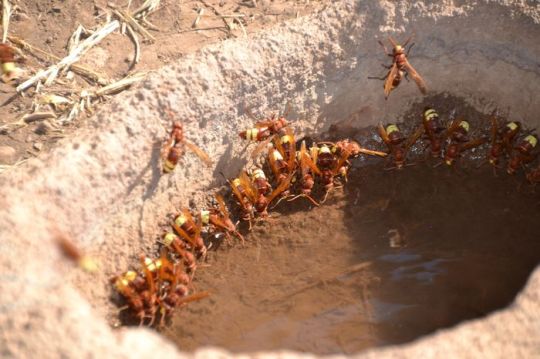
WHY BULGARIA WITHIN THE BYZANTINE WORLD
PREFACE
WHY BULGARIA WITHIN THE BYZANTINE WORLD? For this area of the European space in which the Bulgarians found their homeland, belonged for good and all to a cultural circle setting its profound mark on the fate and culture of all the nations that created states during the Middle Ages.
Bulgaria, established in the seventh century, was all an enemy, an ally, a rival, and a partner of the Eastern Empire we name Byzantium. The seats in the Balkans became the ground of its culture where the Antiquity proceeded to the Middle Ages. There the deep-rooted traditions preserved their triumphs to transform them into an integral part and wealth of the new sovereigns of the territories of the Bulgarians.
Byzantium was the mightiest source of ideas, patterns, model examples and rivalry for the Bulgarians. Captivating its territory from the Empire, the newborn state became related with it, waged wars against it, clashed with it, adopted models in all the spheres of life or freed itself, fell under its impact still searching its friendship, or fought for supremacy. In the course of nearly two centuries (10th – 12th), it fell again within the state and political system of Byzantium as this circumstance enriched it still further on.
This quite complicated picture of the relations between Bulgaria and thousand of years old Empire, enriched by the spirits of its predecessors and the variegated ethno – cultural amalgamation of its heterogeneous population reflected on and can be illustrated by the material and artistic reaching.
Bulgaria belonged actively to the Medieval Christian world and shared its cultural values thanks again to its affiliation to the Byzantine circle. Thus, the territories of the future state of the Bulgarians have preserved till our day the trace of a large-scale development connected with the spread and recognition of the world religion. Temples and monasteries were set up even in the most secret recesses of the Byzantine Balkan provinces between 4th and 7th centuries. Today their ruins spring up from the soil, like St. Sophia in Serdica, the Old Metropolitan Church in Mesambria bulgaria private tours, the Red Church in Perushtitsa, or the basilica in Belovo, to let us appraise this soil as an artistic seat and integral part of the cultural commonwealth of Byzantium.
The sculptural workshops on the Island of Prokonnesos in the Sea of Marmara worked for the decora-tion and furnishing of these elite edifices. The most exquisite pieces of work designed for the imperial constructions of the Capital city of Constantinople were employed as model examples. The light coming from the temple windows swept up the multi-colour mosaics on the floors and inspired life in scenes and images on the walls. The painted tombs in the necropolis of Serdica, the floor mosaic of St. Sophia Church, and the angels on the arches of the Red Church almost two hundred years later outline the course and the achievements of the artistic creation.
0 notes
Photo

The village of St Nicholas
Six kilometres along the coast is the village of St Nicholas where the coast slopes down to Taouk Liman (The Bay of Birds), for harpoon-hunting. There is the Roussalka camp site.
Southwest of Roussalka is the village of Bulgarevo, and six kilometres further southeast Cape Kaliakra {Beautiful Cape) nses 60-70 metres above the sea, with reddish rock layers of particular beauty.
Kaliakra’s original name was Tirisis, meaning a Thracian settlement. According to ancient literary sources Lizimah hid his treasures in the caves of Tirizis. The Roman fortress on the Cape known by the name of Tetrasiada was incorporated into the province of Skitiya. During the Eastern Roman Empire the fortress was called Acrecastelum and in the Middle Ages it became Kaliakra. With the settlement of the Bulgarians in these parts the fortress became part of the Bulgarian lands. At the end of the 14th century despot Dobrotich built a fortress here and called it Kalatserka. On July 31, 1971, near Kaliakra, the Russian Admiral Ushakov defeated a Turkish fleet, and in 1912 the Bulgarian torpedo-boat Druzki sank the Turkish cruiser Hamidie.
Archaeological excavations have uncovered the foundations of fortress walls, dwellings and tombs. In the Middle Ages Kaliakra was surrounded by three defensive fortress walls. One of them was a land fortification. Another was a defensive line about 500 metres in length stretching from east to west blocking access to the Cape. It was erected by Emperor Aurelian in 214-175 sightseeing turkey. The wall has now been partly explored, restored and conserved. Remains from it can be found 1.5 metres above ground. It is supposed to have been 10 metres high and to have had four towers. An early Christian tomb from the 6th century was discovered between the second and the third defensive line. It is rectangular in shape, 2×4 metres and 2.40 metres high.
The third defensive line is 160 metres long and its remains are about three metres high. A Roman bath from the 4th century was discovered behind this wall as well as a church from the Middle Ages.
Cape Kaliakra
Cape Kaliakra has been declared a National Museum. An interesting exhibition showing artefacts found during excavation has been arranged in one of the caves wliile another cave has been converted mto a restaurant.
On the E-87 international highway and along the elevations of the Chirakman tableland there was once an ancient town, Byzone, built on the site of an old Thracian settlement. In the 1st century part of the Chirakruan elevation along with Bizone sank into the sea. In Roman times the town was restored. It was incorporated into the boundaries of the Bulgarian state. After its devastation by the Tartars Kavama, as it is now called, was restored as a strong fortress by the independent boyar Balik and his successors Dobrotitsa and Ivanko.
Kavama today is a rich agricultural area. On the Chirakman elevation are the foundations of several mediaeval churches, and in the south are the foundations of a Roman structure.
Hotels: Dobrotitsa, two stars, with three single rooms, 41 double rooms, four suites, restaurant and information desk; Kavarna Hotel, two stars, with 400 beds; Morska Zvezda (Sea Star ), two stars and the Chaika casino’on the beach.
Along the E-87 highway towards Balchik is a modem medical resort complex featuring a balneosanatorium, a mud cure establishment and a medical clinic. This is Touzla of Balchik spa resort. It is recommended for the treatment of after-effects from infantile paralysis, neuritis, slipped discs, radicolitis and infectious polyarthritis. The Tozlata camp site is nearby.
0 notes
Photo

Yablamtsa
The road leads on to Yablamtsa (3,500), an important transport centre. A detour to the right leads to Glozhene monastery, perched on the inaccessible rocks of peak Lisets. Not far from it is the Gradeshnitsa cave with underground lakes and chambers. Further on are the resorts Teteven (pop.
14,0) , in one of the most beautiful spots of the Balkan Range, and Ribaritsa which is 12 km southeast of Teteven between the Rivers Ribaritsa and Beli Vit.
In Teteven is a Balkantourist hotel, Teteven, accommodating 115, with restaurant, night club, cafe, information office (tel.: 2246). Some 7 km away, south of the village of Malka Brestnitsa, is one of the most picturesque caves in Bulgaria — the Sueva Doupka cave. It is 205-metre-long and has 5 halls of different sizes. Further east along E-771 there is a deviation which leads to the picturesque town of Troyan t pop. 24,000) situated along the Beli Ossum river at Troyan Pass. Ruins from the Roman Trajan road are preserved here. The only building of the old town which existed prior to the liberation from the Turks is the police station, which survived the 1877 fire caused by the Turks. Now it bouses the history museum. The town has a museum of arts and crafts and applied arts, the only one of its kind in Bulgaria. The town is a climatic mountain resort. The Troyan hotel, 2 stars, 2 floors, has 4 suites and 122 beds, restaurant, day bar, cafe, an information office (tel.: 42-23 and 23-96).
The resort Oreshak
The resort Oreshak (pop. 2,600) is 5 km east of the town, in the valley of the River Chemi Ossum. It is a well known art centre for applied arts and has a national exhibition of arts and crafts.
10 km from Troyan, on the left bank of the Cherni Ossum is Troyan Monastery — Bulgaria’s third largest monastery, founded in 1600 with icons by Zahari Zograph. The encarved wood iconostasis was made by Tryavna carvers. During Ottoman domination the monastery was the cradle of Bulgarian nationalism and spirit. There are 200 beds for guests.
We retrace our steps, cross E-771 and continue northwards reaching the town of Lovech — (pop. 47,000), built on both banks of the River Ossum. Settlements existed here in pre-historic, Thracian and Roman times. The Romans built the strong Melta fortress which the Bulgarian rulers Assen and Peter used in 1187 sofia daily tours. The headquarters of the Internal Revolutionary Committee in the struggle against Ottoman domination was here. Now the town is an industrial and vine-growing centre. Tourist attractions are the old covered bridge on the Ossuin, built in 1871-1874, the Vassil Levski Museum of National-Liberation, Vassil Levski monument, Stratesh Hill park, the ruins of Lovech fortress. Hotels: Hissarya, 2 stars, tel.: 38-21, Balkan, Stratesh, Moskva. Car-repair shop — 4 Byalo More St., tel. 44-24.
35 km to the north is the big economic, administrative, transport and cultural-historical centre of the Danubian Plain — the city of Pleven (pop. 123,000), situated on the Toucheni- tsa river. The city was founded in the 4th-3rd century B.C. when primitive settlements appeared in the Kaiiuka locality. Later, in the 1st millennia the Thracians settled here, followed by the Romans in the 1st century, who built the Storgozia fortress. During the Middle Ages invaders repeatedly destroyed the town and the fortress, which were later restored.
0 notes
Photo

Zemen Monastery
The artist of the Zemen Monastery sought decorative rather than artistic effects in his work. He painted in light colours, with a limited colour scheme in which various shades of ochre predominate. But his force lay in his sure and expressive line. It is grim and rough, but for that very reason it has vigorously delineated the strong well formed features and the big impressive bodies. The faces of the Apostles Peter and especially Paul are inimitable in that respect. They are the beginnings of a strongly expressive art, which drew its power from folk art, free of the conventions of court academic art, and sought novelty in its surroundings.
The realism, which is such a marked feature of many of the compositions in the Zemen murals, is due to this folk art and its aesthetics. It was an art which had certain archaic elements, showing that it had flourished locally for a long time previously. We find it in a number of other monuments of the 14th and 15th century, but we find its style already formed in a number of miniatures as early as the 13th century as is apparent from Father Dobreisho’s Bible city tour istanbul, for the present the finest example of the folk school of painting, in which Old Bulgarian ornamentation reached its highest development.
Churches of the Holy Archangels
The Churches of the Holy Archangels, Pantocrator and St. John Aliturgetos in Nessebur, dating back to the 13th and 14th centuries, mark the zenith of church architecture in the Bulgarian lands. They are comparatively large in size, and interesting both in plan and space treatment. But they are particularly interesting because of the rich ornamentation of their outer walls. These are broken by rows of arched niches, above which there is a frieze of small blind arches, resting upon protruding console stones. Bricks are used as a decorative element by grouping them into different combinations, and so are special small glazed tubes.
Medieval Nessebur was a city of many churches. Today only about ten remain, which have nevertheless left a clear imprint on the aspect of this town. Remnants of murals in some of them show the artistic value which they must have had. Gifts of icons were also made to them. Some of the finest 14th century icons now in our possession come from Nessebur. Among them an icon representing the Virgin, holding the Infant Jesus in her arms, is of particular interest. It was presented to one of the Nessebur churches by Ivan Alexander’s under in 1342.
This icon, which is a conventional presentation of the merciful Virgin, was repainted at a later date but is nevertheless of interest. It has a beautifully made silver cover and a metal edging to the veil. This metal cover, as well as certain other old icons known to us, show that the goldsmith’s art, and decorative art in general, was highly developed in Medieval Bulgaria. In general, together with monumental art, decorative art in all its branches had reached a very high level and was- flourishing. Mention should here be made of the coins, which began to be minted in the reign of Ivan Assen II (1218-1241) and continued down to the time when Bulgaria fell under the domination of the Ottomans.
0 notes